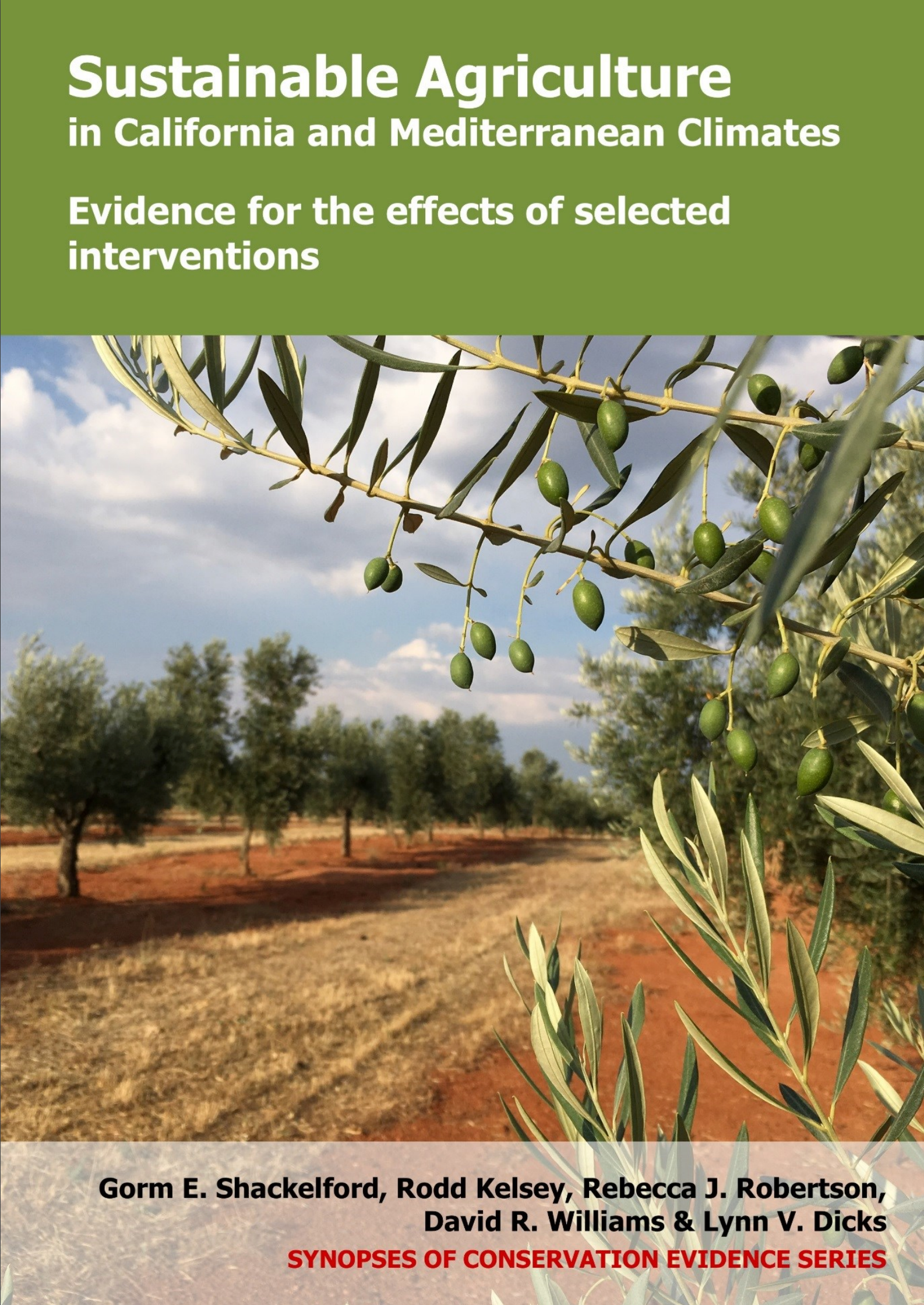Water: Plant buffer strips
-
Overall effectiveness category Unknown effectiveness (limited evidence)
-
Number of studies: 5
View assessment score
Hide assessment score
How is the evidence assessed?
-
Effectiveness
50% -
Certainty
30% -
Harms
0%
Study locations
Supporting evidence from individual studies
A replicated, randomized, controlled study in 1997 in irrigated pastures in the foothills of the Sierra Nevadas, California, USA, found less sediment in runoff from pastures with buffers. Water availability: Similar amounts of water were lost as runoff from plots with or without buffers (118–1,386 vs 121–893 m3/ha). Nutrients: Similar amounts of nitrate and phosphorus were found in runoff from pastures with or without buffers (sprinkler: 1.78 vs 1.76 kg NO3-N/ha; 0.34 vs 0.38 kg total P/ha; flood: 0.91 vs 1.34 kg NO3-N/ha; 0.24 vs 0.23 kg total P/ha). Sediments: Less sediment was found in runoff from pastures with buffers, compared to pastures without buffers, in two of four comparisons (0.3 vs 0.4–0.16 g total suspended solids/litre). Methods: Buffers (10 m width, parallel to the stream channel or runoff ditch in which runoff was measured) were fenced to exclude grazers on 1 May 1997. Pastures and buffers were 40% clover and 60% grass. Four pastures had buffers, and four did not. Half of the pastures (1 ha each) were intensively sprinkler-irrigated and grazed (six cattle, five-day rotation). The other half (3 ha each) were flood-irrigated and grazed (20 cattle, seven-day rotation). The cattle were yearling beef heifers, in rotation from 1 June to 15 October. Runoff was measured during irrigation events (sprinkler: five events, 787 m3/ha/event; flood: eight events, 1,642 m3/ha/event) in August, September, and October (volume was measured every 15 minutes in a weir; samples were collected every hour).
Study and other actions testedA replicated, randomized, controlled study in summer 2000–2001 in montane pasture in California, USA, found that grass buffer strips reduced the amount of nitrate in runoff from extensively grazed irrigated pasture. Nutrients: Buffer strips reduced the amount of nitrate in runoff (8 m buffers: 28%; 16 m: 42%). Buffers trapped twice the amount of nitrogen, compared to unbuffered plots, in the first four weeks. Implementation options: Buffers trapped higher amounts of runoff in the first four weeks, compared to the next 10 weeks. Methods: Plots (5 x 48 m) were buffered (8 or 16 m) or unbuffered (three replicates each). Fertilizers were applied to plots (170 kg/ha) in May. Five cattle (per 0.2 ha) grazed for two days (faecal matter: 336 kg/ha/plot) every three weeks. Buffer strips had no grazing or fertilizer application. Plots and buffer strips were irrigated in April–October (167 L/s/ha, 3.5 h). Soil berms separated plots. Water samples were collected for 14 weeks following fertilizer (5 kg/ha, traceable potassium nitrate) and water (20 L/m) application. A trough at the bottom of the buffers collected surface runoff and soil solution samplers (45 cm deep) collected subsurface runoff.
Study and other actions testedA replicated study in May 2004 on pastureland in California, USA, found that vegetated buffer strips decreased the amount of Cryptosporidium parvum (a protozoan pathogen) in runoff, after bovine manure application. Pathogens and pesticides: Overall, vegetated buffers (1 m wide) with over 95% vegetation cover and slopes of 5–20% decreased the amount of C. parvum in runoff (data reported in logarithmic units). Implementation options: Overall, reduction of C. parvum for every meter of vegetation was higher for 5% slopes, compared to 12% and 20% slopes (data reported in logarithmic units). Methods: Soil boxes (0.5 x 1 m, 0.3 m deep) packed with soil from open grassland (Madera County) were planted with grass (150–200 g of seed/box) and had varying slopes (5, 12, and 20%, four replicates each). Bovine faeces (200 g) spiked with C. parvum (2 x 108) were applied to the plots. Grass was clipped to 10 cm high, one day before faeces and water was added. Water was added (53 mm/h, 2 h, four times). Surface runoff and subsurface flow were collected separately at 5-min intervals. Total volume was measured for each sample.
Study and other actions testedA replicated, controlled study in 2006–2007 in two arable fields in California, USA, found that planting vegetation in ditches reduced the amount of sediment in runoff from furrow-irrigated fields. Sediments: Vegetated ditches reduced the amount of solids in runoff by 62%. Vegetated ditches reduced the amount of soil in runoff (0.1 g/L). Methods: Plots (183 m plots; 8–12 plots; number of plots not clearly reported) grew processing tomatoes (in Davis) or lima beans (in Chico). Each plot had 9–10 furrows, spaced 1.5 m apart. Water was added to the plots (12–20 gallons/minute/furrow; 5-6 replicates per growing season). Runoff was collected in a drain at the end of the plots (every 30 mins from beginning of surface runoff until the water was turned off). Flow rate was automatically measured every minute. Runoff was directed into vegetated and non-vegetated ditches. Water samples (500 ml) were taken before and after it passed through the vegetated ditches. Vegetation was planted in ditches (49 x 1.5 m, 0.2 m deep; six replicates: five with tall fescue Festuca arundinacea and one with rye grass Lolium spp.).
Study and other actions testedA replicated, randomized, controlled study in 1997–2010 in arable farmland in the Po Valley, Italy, found more soil moisture in plots with buffers, compared to plots without buffers. Water availability: Soil moisture was higher in buffered plots, compared to unbuffered plots, in two of eight comparisons (20% vs 19%). Implementation options: Soil moisture was higher in plots with 3 m buffers, compared to 6 m buffers, in one of two comparisons (20% vs 18%). Methods: Maize plots had grass buffers (3 m grass: tall fescue Festuca arudinacea), grass and woody buffers (3 m grass with one tree row; 6 m grass with one tree row; 6 m grass with two tree rows), or no buffers (two replicates of each plot). Trees included guelder-rose Viburnum opulus and London sycamore Platanus hybrida. Plots were ploughed (35–40 cm depth) and harrowed before sowing crops. Fertilizers were applied (April: 400 kg/ha of NPK; May: 450 kg/ha of urea). Grass buffers were mown twice a year in growing season (residues were not removed) and tree offshoots were removed. Trees were coppiced in 2003 and 2010. Soil samples were taken (0–15 cm) in April and October 2010.
Study and other actions tested
Where has this evidence come from?
List of journals searched by synopsis
All the journals searched for all synopses
This Action forms part of the Action Synopsis:
Mediterranean Farmland
Mediterranean Farmland - Published 2017
Mediterranean Farmland synopsis





)_2023.JPG)














